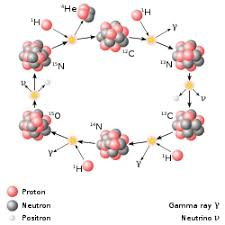CURRENT AFFAIRS
Get the most updated and recent current affair content on Padhaikaro.com
Nuclear Fusion Technology
- IAS NEXT, Lucknow
- 12, Feb 2022

Reference News:-
Scientists in the United Kingdom said they have achieved a new milestone in producing nuclear fusion energy, or imitating the way energy is produced in the Sun.
What’s the new record now?
A team at the Joint European Torus (JET) facility near Oxford in central England generated 59 megajoules of sustained energy during an experiment in December, more than doubling a 1997 record.
- A kg of fusion fuel contains about 10 million times as much energy as a kg of coal, oil or gas.
The experiment:
The energy was produced in a machine called a tokamak, a doughnut-shaped apparatus, and the JET site is the largest operational one of its kind in the world.
- Deuterium and tritium, which are isotopes of hydrogen, are heated to temperatures 10 times hotter than the centre of the sun to create plasma.
- This is held in place using superconductor electromagnets as it spins around, fuses and releases tremendous energy as heat.
Why is this achievement so significant?
- Energy by nuclear fusion is one of mankind’s long standing quests as it promises to be low carbon, safer than how nuclear energy is now produced and, with an efficiency that can technically exceed a 100%.
- Also, The record and scientific data from these crucial experiments are a major boost for ITER, the larger and more advanced version of the JET.
What is International Thermonuclear Experimental Reactor (ITER)?
ITER is a fusion research mega-project supported by seven members – China, the European Union, India, Japan, South Korea, Russia and the USA – based in the south of France, to further demonstrate the scientific and technological feasibility of fusion energy.
What will ITER do?
- Produce 500 MW of fusion power.
- Demonstrate the integrated operation of technologies for a fusion power plant.
- Achieve a deuterium-tritium plasma in which the reaction is sustained through internal heating.
- Test tritium breeding.
- Demonstrate the safety characteristics of a fusion device.
What is Fusion?
Fusion is the energy source of the Sun and stars. In the tremendous heat and gravity at the core of these stellar bodies, hydrogen nuclei collide, fuse into heavier helium atoms and release tremendous amounts of energy in the process.
Three conditions must be fulfilled to achieve fusion in a laboratory:
- Very high temperature (on the order of 150,000,000° Celsius).
- Sufficient plasma particle density (to increase the likelihood that collisions do occur).
- Sufficient confinement time (to hold the plasma, which has a propensity to expand, within a defined volume).